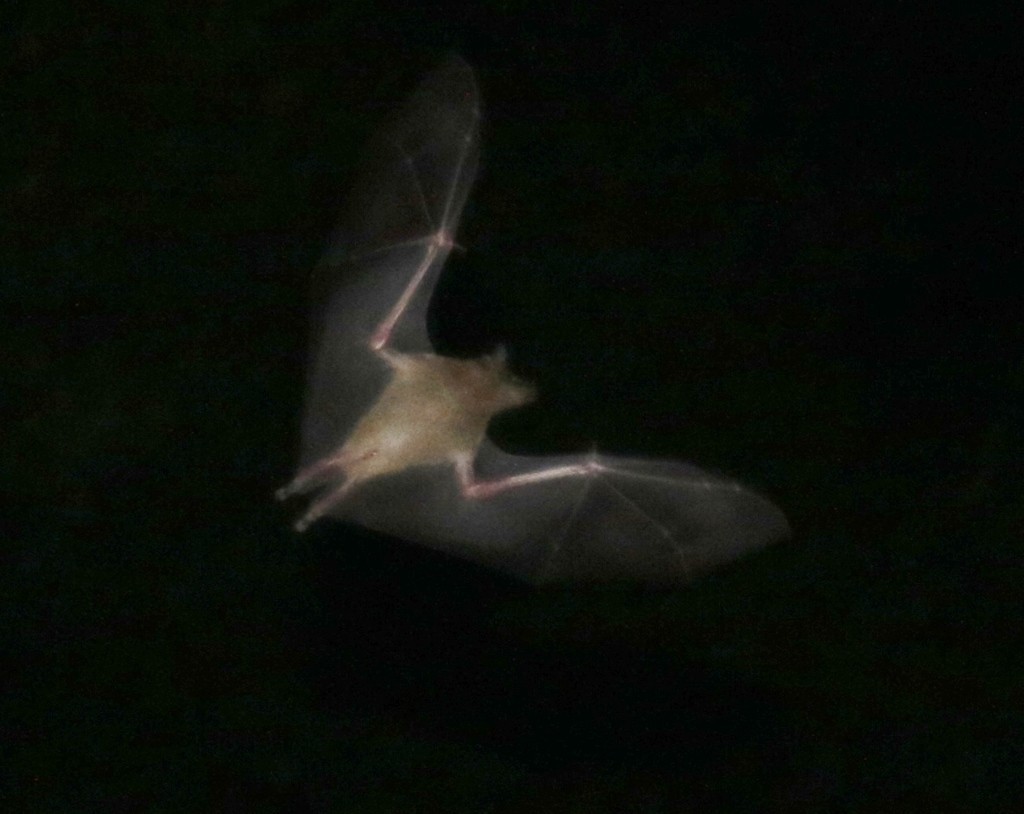Lesser long-nosed bat
A species of Saussure's long-nosed bat, Also known as Mexican long-nosed bat Scientific name : Leptonycteris yerbabuenae Genus : Saussure's long-nosed bat
Lesser long-nosed bat, A species of Saussure's long-nosed bat
Also known as:
Mexican long-nosed bat
Scientific name: Leptonycteris yerbabuenae
Genus: Saussure's long-nosed bat
Content
Description People often ask General Info
 Photo By silversea_starsong , used under CC-BY-NC-4.0 /Cropped and compressed from original
Photo By silversea_starsong , used under CC-BY-NC-4.0 /Cropped and compressed from original Description
Lesser long-nosed bats are relatively small bats, with a total length as adults of around 8 centimetres (3.1 in), and weighing between 15 and 25 grams (0.53 and 0.88 oz), depending on the time of year. Males and females are similar in size, and virtually indistinguishable. As their common name implies, they have a long, narrow snout, and this terminates in a small triangular nose-leaf. While they do have three internal caudal vertebrae, they have no visible tail. The tongue of lesser long-nosed bats has a number of adaptations for lapping nectar, including long ridges and rough, conical papillae, which may also help protect against periodontal disease by scraping the teeth clean. Their wings have a high wing loading, allowing for energy efficient long-distance flight in open habitats, at the expense of manoeuvrability. Only three other species of North American bat have a nose-leaf, and two of these, the Mexican long-tongued bat, and the California leaf-nosed bat, have a distinct tail, and also, in the latter case, much larger ears than lesser long-nosed bats do. They are more easily confused with their close relatives, the greater long-nosed bats, but, in addition to being about 10% larger, the latter have shorter, greyish fur, and proportionately longer wings. Adult lesser long-nosed bats are yellow-brown or grey above, with rusty brown fur below. Their ears are small. 
People often ask
General Info
Lifespan
8 years
Diet
Lesser long-nosed bat primarily subsists on the nectar and pollen from cacti, particularly columnar cacti, and agaves. During feeding bouts, it also ingests small quantities of the plants’ fruits and seeds, aiding seed dispersal.
Appearance
Lesser long-nosed bat is a small bat, with a length of 2.8-3.5 inches and slender body. It has long, soft, woolly fur that is brown to gray in color. Noteworthy are the elongated muzzle and tongue, and large nose-leaf used for echolocation. It displays long, narrow wings and a short, round tail. No significant visual differences exist among genders or various life stages.
Behavior
Lesser long-nosed bats feed mainly on nectar from night-blooming plants such as saguaro, Organ Pipe Cactus, as well as century plant and other agaves. They are important pollinators of night-blooming cactus. They may also eat some cactus fruits, and, during the winter, on pollen from a range of other plants as the opportunity arises. Lesser long-nosed bats roost during the day in large colonies of up to several thousand individuals in caves or abandoned mines, dispersing at night to feed. The size and composition of such colonies varies throughout the year, as the bats migrate to summer feeding grounds. At some times of the year, many colonies become occupied only by nursing females and their young, with males occupying smaller temporary roosts. 
Population
Decreasing